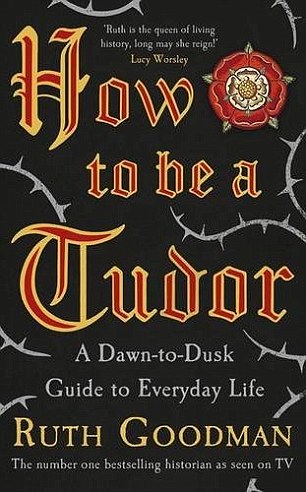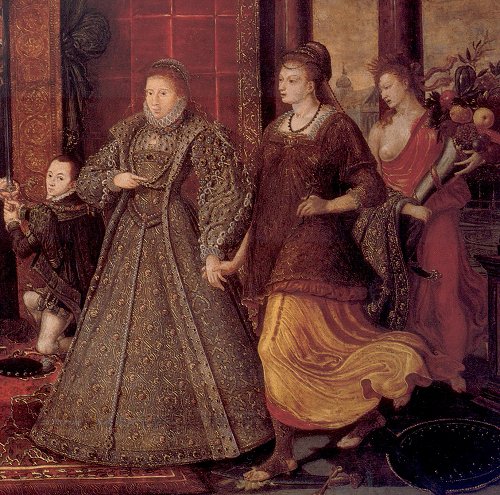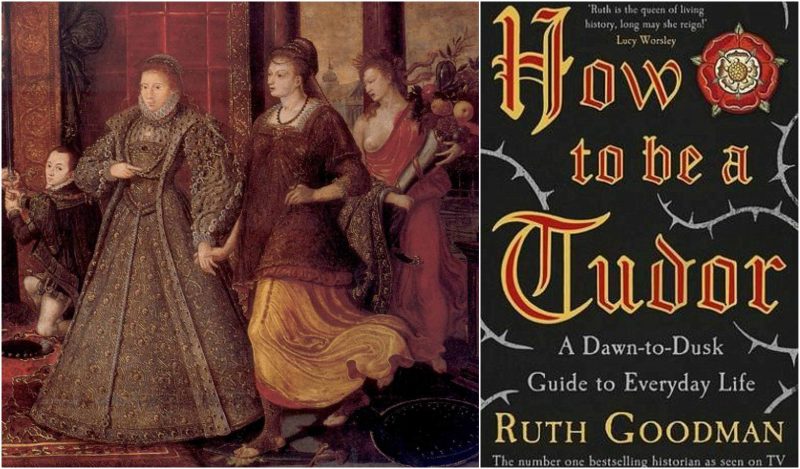For those who have a little knowledge of what it was like to live centuries ago, they are probably thinking that it would be quite disgusting. Very few baths, only a certain narrow selection of food, dirty streets which eventually caused the Black Plague – the list goes on. Even today people seem to have some nasty habits about them that make a person think, “How in the world are they still alive with these particular habits?”
The lifestyle of the Tudors appalls some archaeologists. Although they were believed to have been a very classy people, their hygiene was simply disturbing. The Tudors were of Welsh origin. When Henry Tudor had “seized the throne” in 1485, the population of England and Wales was only 2.5 million. However, by the beginning of the Stuart reign, in 1603, it was up to four million.

Some think that it would have been absolutely beautiful to live back then. There were castles, large woods and forests, and unpolluted rivers with lovely banks filled with wildflowers. Sounds like it was a very pleasant time, right? Researcher and author Ruth Goodman put that theory to the test and decided to study what it would be like to live in the Tudor era.
As can be imagined, the era was a bit harsh. The medieval world was slowly turning into the modern and industrial world we know today. People didn’t have alarm clocks; they got up with the sun every day. In the summer months, that would have been around four o’clock in the morning. About 90 percent of the population lived in rural areas in single-room homes.
Only the rich could afford glass for the windows; everyone else to use cloth as shutters, which obviously did not keep out the cold or damp one bit. Beds would have had curtains surrounding them, but there still wasn’t much privacy. Parents, children, and servants would all sleep in the same room. The mattresses people used were sacks of straw on the earthen floor. Chimneys would only become available later in the century, so the food was cooked on open hearths.
The main meal of the day came at 10 in the morning. It would have consisted of meat roasted over wood or peat fires. People ate from communal basins, not personal plates like we do today. Also, they didn’t have any cutlery except a random dagger. Pewter platters had only appeared in wealthy homes around 1585.
As archaeologists found remains of Tudor skeletons, they did an analysis. The results told them that these people were in a state of terrible malnutrition, with such diseases as rickets, scurvy, and anemia prevalent.
Considering most people lived in the countryside, farming and agriculture ruled the land. Sheep shearing had been done by hands with clippers. Then, the fleeces were cleaned and spun by the women who had to also prepare meals, bake bread, brew ale, make butter, milk the cows, and then sew and weave during the night. Manufacturing clothing from wool was a successful business. There were gowns and doublets so valuable that they were mentioned frequently in wills and passed down to family members, servants, or friends instead of being thrown away.
Even during the summer, people had worn heavy, hot clothing. The basic Tudor outfit included linen or canvas shirts, smocks, breeches, hose, ruffs, and cuffs. Goodman said that clean underwear was a luxury. The poor changed their shirts only once a week and their socks twice a month.
In her new book Goodman wonders whether or not the codpiece would come back as a fashion statement. The big bulges had been associated with power and lordship. She added that Henry VIII would have actually gotten himself stuck in a revolving door because his sleeves were so large.

There was actually a bill put forth called the Sumptuary Act of 1562, which stated that certain clothing should be worn that would denote a man’s place within society. For example, officials had to wear black, floppy hats. Ruffs were made from starched linen which restricted the head motion of the person wearing it, requiring the person to turn their whole torso. This was considered a stylish behavior.
When people woke up first thing in the morning, they would quickly rinse themselves with cold water or leap into one of the rivers nearby. Hot water was avoided because many people thought that it opened the pores in the skin and let in disease. Teeth and rear ends were cleaned with soot and rubbed around with a finger. Before shampoo came to be used, there was frequent combing of the person’s hair to tease out the lice and nits. Barbers during the era not only cut hair, but they also pulled teeth and performed minor surgeries as well.
Lavender, rosemary, and rose oils were used as perfumes. Women generally bought them from the local apothecary. The apothecary also mixed paint and worked with rudimentary pills and medical potions.
Reading and writing were thought to be different, separate skills. The clergy taught the rote-learning of prayers. There were very few schools that had real teachers; many in that era did not encourage education, fearing the poor would take advantage of it; the rich did not want them to start thinking too much. By 1558, about 20 percent of men and five percent of women were literate. The pens they used to write with were carved from goose quills; ink was made from gum and urine.
In Tudor Britain, people knew their place and knew what could happen if they stepped out of line or committed a crime. Illegitimacy was considered a greater sin than homosexuality because obligations to bastard children would upset the inheritance laws.
Many people enjoyed spending hours watching bull and bear baiting, cock fighting, archery contests, skittles, and dancing in their free time. Women would bounce around and show their knees, which was also quite popular. By nightfall, everyone was in bed. If they suffered from insomnia, they would tie herrings to the soles of the feet.
